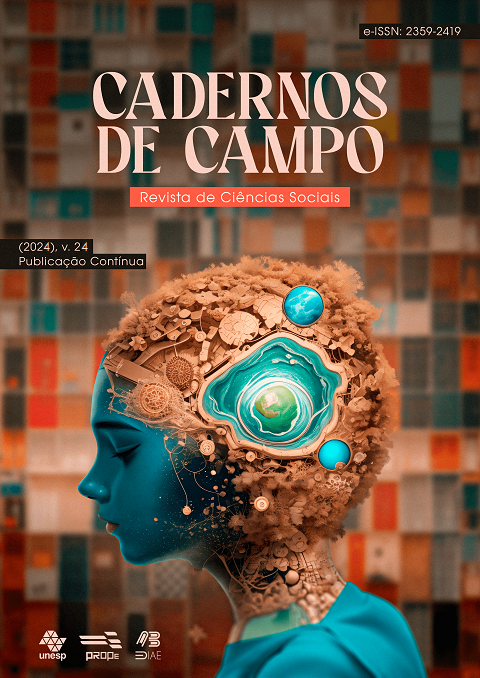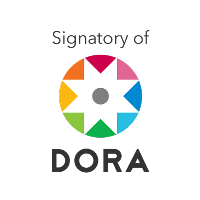Contributions of neuroscience in measuring emotional impact in advertising campaigns using EEG
DOI:
https://doi.org/10.47284/cdc.v24i00.16662Keywords:
Consumer Neuroscience, Neuromarketing, Communication Impact, Advertising, EEGAbstract
Measuring advertising impact has always been a challenge for the field of study. In this case, consumer neuroscience contributes significant scientific solutions by introducing evaluative metrics for attention and interest processes. This article presents the analysis of a beer advertisement using low-resolution EEG (electroencephalography), aiming to assess the emotional impact when subjects are exposed to the advertising stimulus. The advancement of Brain Computer Interface technology has led to devices that can capture the brain's superficial electrical frequencies and offer an opportunity to use these data in the evaluation of advertising. The results obtained from the study demonstrate that it was possible to capture significant effects on the brain's electrical activity among consumer groups, contributing to marketing decision-making. The purpose of this research is to demonstrate different possibilities of advertising metric analyses, when applied from a multidisciplinary perspective, in this case with the use of neurobiology in the field of social sciences.
Downloads
References
ASTOLFI, L. et al. The track of brain activity during the observation of TV commercials with the high-resolution EEG technology. Computational intelligence and neuroscience, [S. l.], v. 2009, p. 652078, 2009. Disponível em: http://www.pubmedcentral.nih.gov/articlerender.fcgi?artid=2699882&tool=pmcentrez&rendertype=abstract. Acesso em: 12 jun. 2014.
BAIRD, T. R.; WAHLERS, R. G.; COOPER, C. K. Non-recognition of print advertising : emotion Arousal and gender effects. Journal of Marketing Communications, [S. l.], v. 13, n. 1, p. 39–57, 2007.
BARNES, S.; PRESSEY, A. An examination of market maven behaviour across real-life, web and virtual world marketing channels: in search of the “meta maven”? Psychology & Marketing, [S. l.], v. 25, n. February 2008, p. 197–232, 2008.
BELANCHE, D.; FLAVIÁN, C. The Influence of Arousal on Advertising Effectiveness Literature review. In: INTERNATIONAL CONFERENCE ON METHODS AND TECHNIQUES IN BEHAVIORAL RESEARCH, 9., 2014. Anais [...]. [S. l.: s. n.], 2014. p. 27–31.
BOZKURT, F. Effectiveness Of Classroom Lighting Colors Toward Students’ Attention And Meditation Extracted From Brainwaves. Journal of Educational and Instructional Studies in The World, [S. l.], v. 4, n. 2, p. 6–12, 2014.
CHO, O.; KIM, J.; LEE, S. A Design of BCI based Environment System for Immersion of FPS Game. International Journal of Multimedia and Ubiquitous Engineering, [S. l.], v. 9, n. 5, p. 149–154, 2014.
CORREIA, MÁRCIO ANDRÉ LOPES. A publicidade como mecanismo para criar valor a uma marca. 2015. 97 f. Dissertação (Mestrado) - Universidade de Tras-os-Montes e Alto Douro, Vila Real, Portugal, 2015. Disponível em: https://www.proquest.com/openview/0e1c0007beb6c8bd4f4e842c004c13d8/1?pq-origsite=gscholar&cbl=2026366&diss=y. Acesso em: 10 ago. 2023.
CROWLEY, K. et al. Evaluating a Brain-Computer Interface to Categorise Human Emotional Response. In: INTERNATIONAL CONFERENCE ON ADVANCED LEARNING TECHNOLOGIES, 10., 2010. Anais […]. [S. l.: s. n.], 2010. p. 2–4.
DUCAO, A.; TSENG, T.; KAPRI, A. VON. Transparent : Brain Computer Interface and Social Architecture. Siggraph, [S. l.], v. 5, n. 9, p. 4503, 2012.
DU PLESSIS, E. Recognition versus recall. Journal of Advertising Research, v. 34, n. 3, p. 75+, maio/jun. 1994. Disponível em : https://link.gale.com/apps/doc/A15687799/AONE?u=anon~9adde640&sid=googleScholar&xid=22cba453. Acesso em: 10 ago. 2023.
FINN, P. R. Motivation, working memory and decision making: a cognitive-motivacional theory of personality vulnerability ro alcoholism. Behavioral and Cognitive Neuroscience Reviews, v. 1, n. 3, p. 183–205, 2001.
FOLGIERI, R.; LUCCHIARI, C.; MARINI, D. Analysis of brain activity and response to colour stimuli during learning tasks: an EEG study. In: ESCHBACH, R.; MARCU, G. G.; RIZZI, A. (ed.). Color Imaging XVIII: Displaying, Processing, Hardcopy, and Application. [S. l.: s. n.], 2013. v. 8652, p.86520I. Disponível em: http://proceedings.spiedigitallibrary.org/proceeding.aspx?doi=10.1117/12.2007616. Acesso em: 4 jul. 2014.
FRAZÃO, A.; FERNANDO, G. A construção da atenção a partir da memória. Revista Brasileira de Psiquiatria, [S. l.], v. 25, n. Supl II, p. 12–20, 2003.
KATONA, J. et al. Evaluation of the NeuroSky MindFlex EEG headset brain waves data. In: INTERNATIONAL SYMPOSIUM ON APPLIED MACHINE INTELLIGENCE AND INFORMATICS, 19., 2014. Anais [...]. [S. l.: s. n.], 2014. p. 91–94. Ieee. Disponível em: http://ieeexplore.ieee.org/lpdocs/epic03/wrapper.htm?arnumber=6822382. Acesso em: 10 ago. 2023.
KHUSHABA, R. N. et al. Consumer neuroscience: Assessing the brain response to marketing stimuli using electroencephalogram (EEG) and eye tracking. Expert Systems with Applications, v. 40, n. 9, p. 3803–3812, 2013.
KRISHNAN, H. S.; CHAKRAVARTI, D. Memory Measures for Pretesting Advertisements: An Integrative Conceptual Framework and a Diagnostic Template. Journal of Consumer Psychology, [S. l.], v. 8, n. 1, p. 1–37, 1999.
KRISHNAN, H. S.; TRAPPEY, C. V. Nonconscious Memory Processes in Marketing : A Historical Perspective and Future Directions. Psychology & Marketing, [S. l.], v. 16, n. September 1999, p. 451–457, 1999.
LEE, N.; BRODERICK, A. J.; CHAMBERLAIN, L. What is “neuromarketing”? A discussion and agenda for future research. International Journal of Psychophysiology, [S. l.], v. 63, n. 2, p. 199–204, 2007.
MARCI, C. D. Minding the gap: the evolving relationships between affective neuroscience and advertising research. International Journal of Advertising, [S. l.], v. August, p. 473–476, 2008.
MAURI, M. et al. The effects of social communication : a research study on neuroscientific techniques application. In: INTERNATIONAL CONFERENCE ON METHODS AND TECHNIQUES IN BEHAVIORAL RESEARCH, 9., 2014. Anais […]. [S. l.: s. n.], 2014.
MOHAMMAD, S. The Use of EEG Sensors to Detect and Extract Emotions and Attention Levels from the Human Mind. [S. l.: s. n.], 2013.
OHME, R.; MATUKIN, M.; PACULA-LESNIAK, B. Biometric measures for interactive advertising research. Journal of Interactive Advertising, [S. l.], v. 11, n. 2, p. 60–73, 2011.
OHME, R. et al. Analysis of neurophysiological reactions to advertising stimuli by means of EEG and galvanic skin response measures. Journal of Neuroscience, Psychology, and Economics, [S. l.], v. 2, n. 1, p. 21–31, 2009.
OHME, R. et al. Application of frontal EEG asymmetry to advertising research. Journal of Economic Psychology, [S. l.], v. 31, n. 5, p. 785–793, 2010. Elsevier B.V.
ONUNKA, C.; BRIGHT, G.; STOPFORTH, R. Investigating the Choice Factors On the use of XBee / Bluetooth as the Communication Scheme in EEG Sensor Networks. In: ROBOTICS AND MECATRONICS CONFERENCE, 6., 2013. Anais […]. [S. l.: s. n.], 2013. p.52–57.
ORZAN, G.; ZARA, I. A; PURCAREA, V. L. Neuromarketing techniques in pharmaceutical drugs advertising. A discussion and agenda for future research. Journal of medicine and life, [S. l.], v. 5, n. 4, p. 428–32, 2012.
PEARSON, B. et al. Working memory retrieval as a decision process. Journal of Vision, [S. l.], v. 14, n. 2, p. 1–15, 2014.
PETERS, C.; ASTERIADIS, S.; REBOLLEDO-MENDEZ, G. Modelling user attention for human-agent interaction. Image Analysis for Multimedia Interactive Services. In: WORKSHOP ON IMAGE ANALYSIS FOR MULTIMEDIA INTERACTIVE SERVICES, 10., Londres. Anais [...]. Londres, Reino Unido: [s. n.], 2009. p.266–269.
ROCHA, H. M.; DELAMARO, M. C. Abordagem metodológica na análise de dados de estudos não-paramétricos , com base em respostas em escalas ordinais. GEPROS. Gestão da Produção, operações e Sistemas, [S. l.], v. 6, n. 3, p. 77–91, 2011.
VARADA, V. R.; MOOLCHANDANI, D.; ROHIT, A. Measuring and processing the brain ’ s EEG signals with visual feedback for human machine interface. International Journal of Scientific & Engineering Research, [S. l.], v. 4, n. 1, p. 1–4, 2013.
VECCHIATO, G. et al. Patterns of cortical activity during the observation of Public Service Announcements and commercial advertisings. Nonlinear biomedical physics, [S. l.], v. 4, n. Suppl 1, p. S3, 2010.
VECCHIATO, G. et al. Changes in brain activity during the observation of TV commercials by using EEG, GSR and HR measurements. Brain Topography, [S. l.], v. 23, n. 2, p. 165–179, 2010.
VECCHIATO, G. et al. Spectral EEG frontal asymmetries correlate with the experienced pleasantness of TV commercial advertisements. Medical & Biological Engineering & Computing, [S. l.], v. in press, n. 5, p. 579–583, 2011.
VOURVOPOULOS, A.; LIAROKAPIS, F. Brain-controlled NXT Robot : Tele-operating a robot through brain electrical activity. In: INTERNATIONAL CONFERENCE ON GAMES AND VIRTUAL WORLDS FOR SERIOUS APPLICATIONS, 3., 2011. Anais […]. [S. l.: s. n.], 2011. p. 140-143.
WU, C.-H.; JU, L. C.; TZENG, Y.-L. Brain Wave Analysis in Optimal Color Allocation for Children ’ s Electronic Book Design. In: International Symposium on Management Engineering, 8., 2011. Anais […]. [S. l.: s. n.], 2011. p. 1–6.
YAN, W.-S. et al. Working memory and affective decision-making in addiction: a neurocognitive comparison between heroin addicts, pathological gamblers and healthy controls. Drug and alcohol dependence, [S. l.], v. 134, p. 194–200, 2014.
YOO, C. Y. U. N. Unconscious processing of Web advertising: effects on Implicit memory, attitude toward the brand, and consideration set. Journal of Interactive Marketing, [S. l.], v. 22, n. 2, p. 2–18, 2008.
YOON, H. et al. Emotion recognition of serious game players using a simple brain computer interface. In: INTERNATIONAL CONFERENCE ON ICT CONVERGENCE, 2013. Anais […]. [S. l.: s. n.], 2013. p. 783–786. Disponível em: http://ieeexplore.ieee.org/lpdocs/epic03/wrapper.htm?arnumber=6675478. Acesso em: 10 ago. 2023.
Published
Issue
Section
License
Copyright (c) 2024 Cadernos de Campo: Revista de Ciências Sociais

This work is licensed under a Creative Commons Attribution 4.0 International License.









